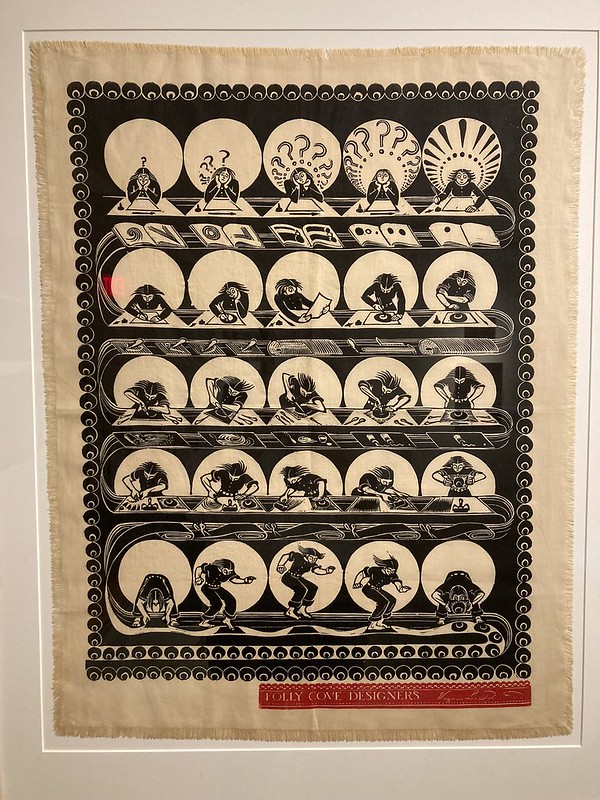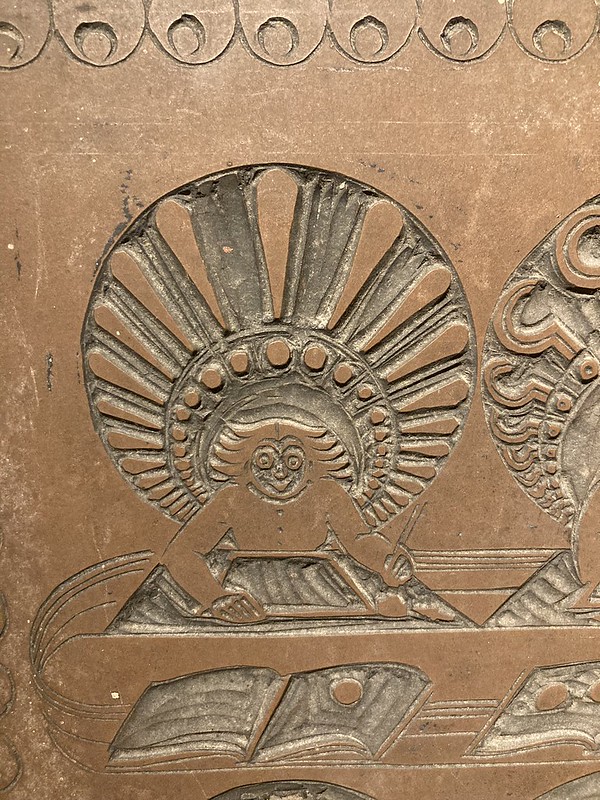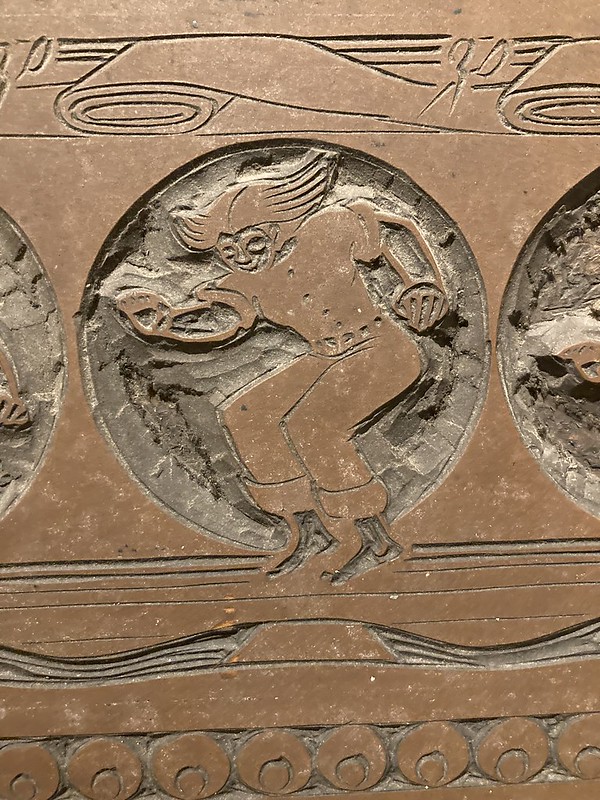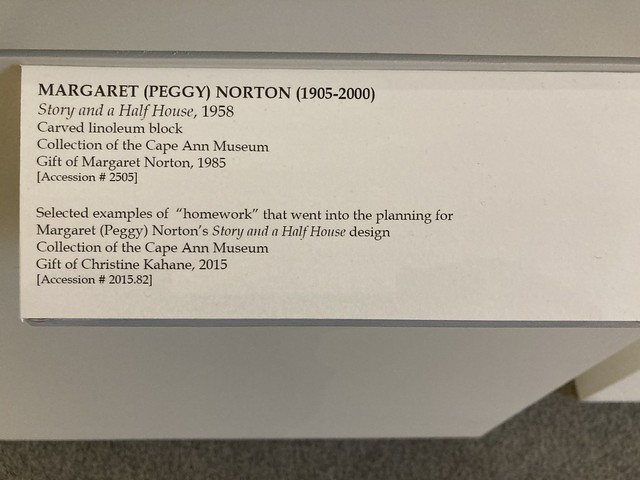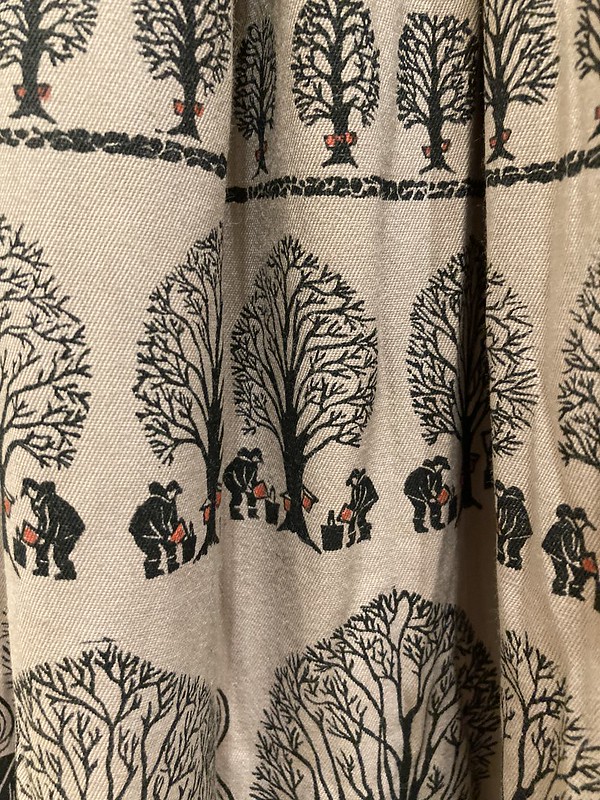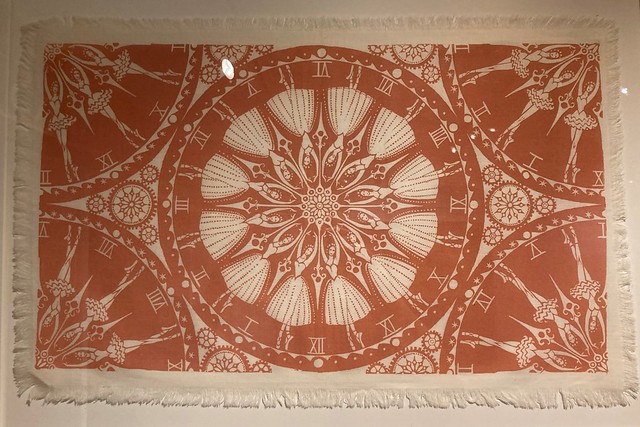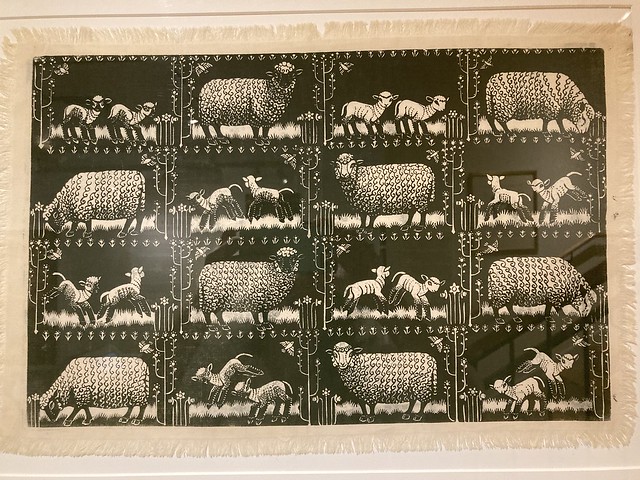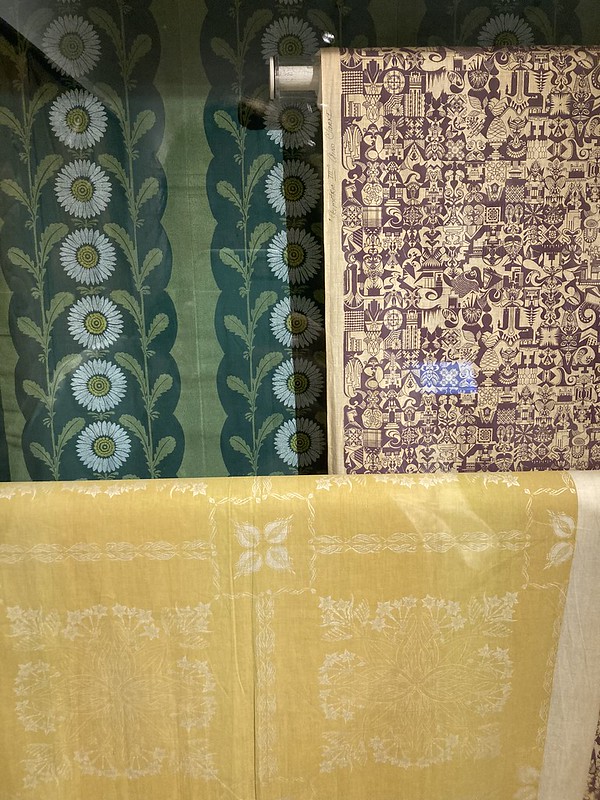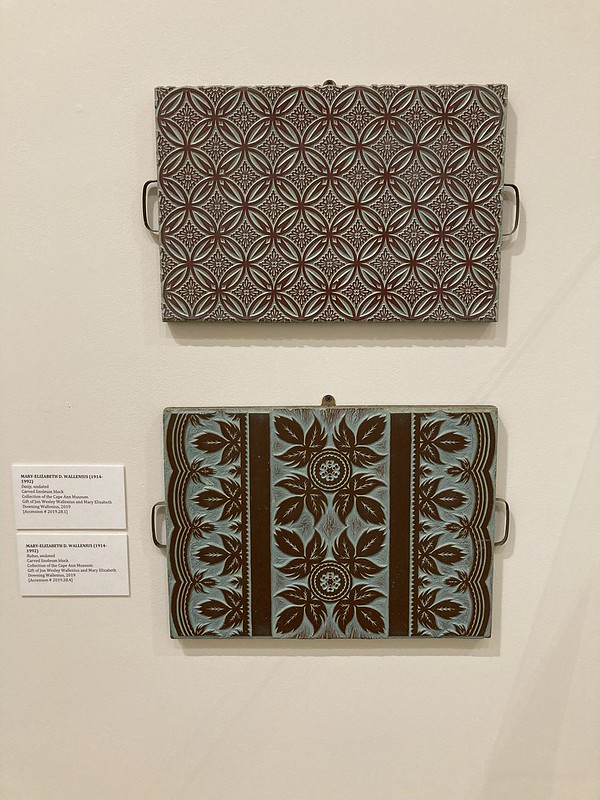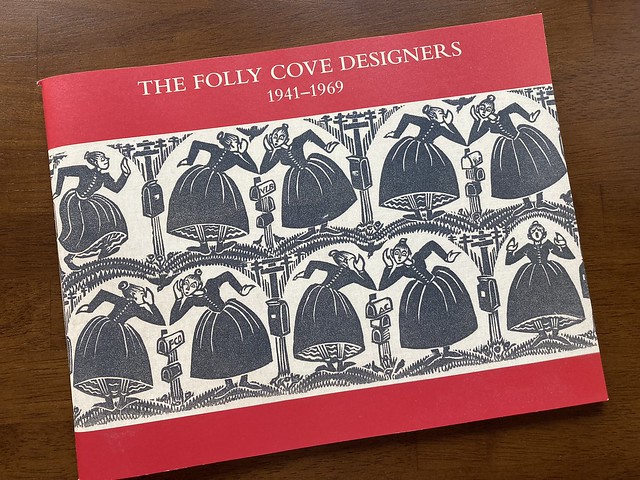
Today I have a field trip to share with you, and if you’re local to Gloucester, MA, you can even check it out for yourself! In October, I visited the Cape Ann Museum in Gloucester to see the exhibit, “Designed & Hand-Blocked by the Folly Cove Designers“.
The Folly Cove Designers were a group that formed and created work in Gloucester throughout the 1940’s, ’50’s, and 60’s. They were led by the multi-talented Virginia Lee Burton Demetrios, whose children’s books, like The Little House, Katy and the Big Snow, Mike Mulligan and His Steam Shovel, Calico the Wonder Horse, etc., you may have read.
I learned about the Folly Cove Designers over a decade ago, when a coworker who had grown up in the Folly Cove neighborhood and known the Demetrioses told me about it. But over time, I nearly forgot. Then I listened to the episode “Strong Community Threads” from the Haptic & Hue: Tales of Textiles podcast all about this group and was reminded. It took a British podcast to remind me of what was in my own backyard. Ironic!
My local library had a museum pass I could check out, which gave me free admission to the museum and the exhibit. I’m so glad I went!
This group began with a neighbor asking Virginia for art classes. From there it grew into more classes with more students, and a curriculum that resulted in a diploma.
l
l
l
l
l
Eventually the students and their teacher formed a design group of accomplished artists who printed with linoleum blocks onto a number of surfaces like paper and fabric. They held exhibitions, showing and selling their work. They depicted what they saw around them in nuanced ways, and in addition to seeing many examples of the prints and finished goods that they created, you can also see the blocks and type of press that they eventually used. Before they got the press? Bodyweight! Because when you don’t have all the “right” tools, you get creative!
Here are some pictures of the display showing the homework students did in their art courses:
l
l
To make a linoleum block print, you draw your design on your linoleum block, carve out the spaces you don’t want to print, roll ink onto the block, and press the block onto whatever you are printing on.
And here are the tools you use to carve linoleum blocks and make these types of prints:
The Cape Ann Museum is a gem. Not only did I go to the exhibit, I also went on the docent-led tour, and learned so much about this beautiful area of Massachusetts. The Folly Cove exhibit really touched me, though. In the vast landscape of history, this group existed so recently, you can almost reach back and touch them. And their work is phenomenal. I studied printmaking in college, and it gives me such an appreciation for their high skill level–certainly a level I never achieved myself. It’s wonderful and exciting to see people who worked hard together and truly excelled at depicting what was all around them–in the most original and surprising ways. Here are some of my favorite parts:
l
l
l
l
l
l
l
l
l
l
l
If you are going to be in the area and want to check out this exhibit for yourself, you should! It runs until March 25, 2023. The museum will be closed from January 24th to February 6th for renovations, and it is always closed on Mondays. If you live locally, see if your library has a pass that will give you free or reduced admission. I also highly recommend buying the exhibition booklet. I bought mine soon after the exhibit opened.
There may be more books on the Folly Cove Designers available at the gift shop now. This exhibit is excellent for those interested in printmaking, Cape Ann history, sewists, pattern lovers, those who like surface design, and anyone who loves Virginia Lee Burton’s children’s books. The museum is right in downtown Gloucester, which has lots of fun shops and a great waterfront to recommend it. One of my favorites? The little rainbow cookies at Caffe Sicilia.


